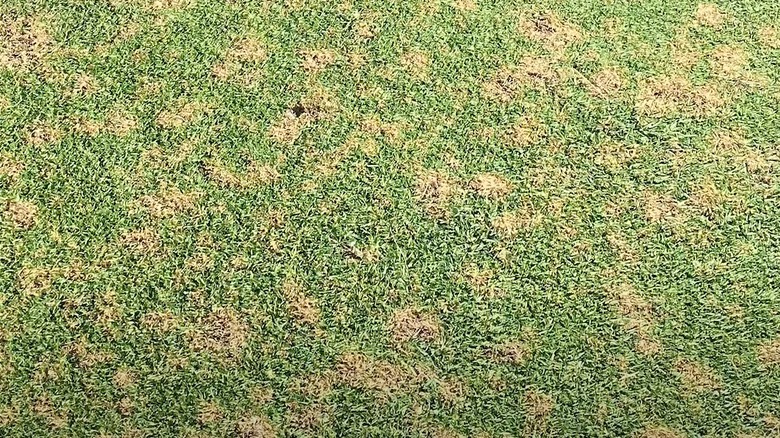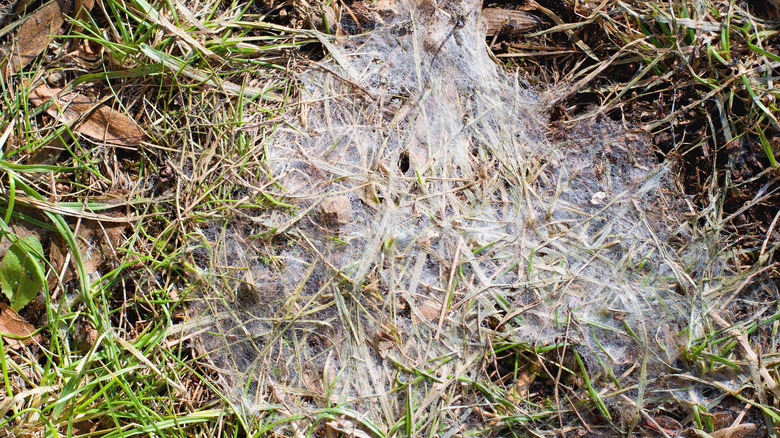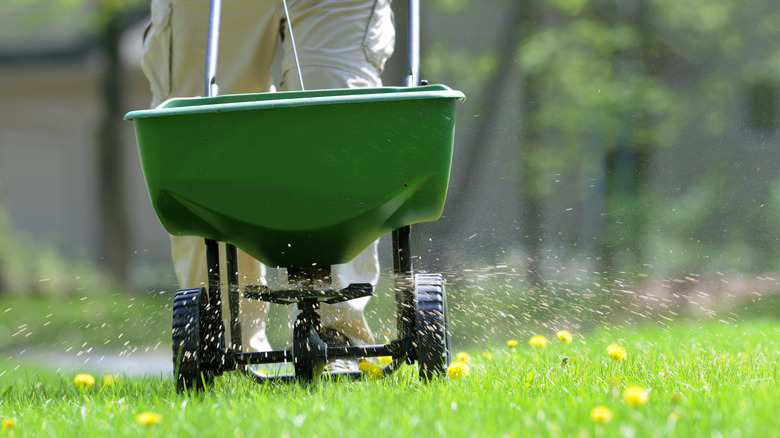What Is Dollar Spot Disease And How Do You Treat It In Your Lawn?
Dollar spot is a disease commonly found in lawns and golf turf, and it appears as small, circular patches of white or tan grass that are usually the size of a silver dollar. This disease is caused by the Clarireedia jacksonii fungus, and can make the grass look like straw. The round, diseased areas of grass may also sink lower than the rest of the lawn. Dollar spot often affects zoysia grasses, ryegrasses, Bermuda grasses, blue grasses, bent grasses, and fescues, though it can appear in many varieties of cool and warm season grasses.
Dollar spot disease typically pops up between May and October, as warmer days and cooler nights provide good conditions for the fungus. Dew is also a contributing factor in the potential for this lawn disease to flourish. To treat your lawn, try feeding your grass a nitrogen fertilizer that's water-soluble and soaking the grass every once in a while rather than watering your lawn every day.
Identifying dollar spot disease and what causes it
In the morning, when dew is visible on the grass, you may see a white substance that looks similar to cobwebs on the straw-like patches of your lawn. This is the mycelium of the fungus and will help confirm that dollar spot disease is the problem. Upon inspection, the blades of grass will also have white or yellow discoloration with brown edges in the shape of an hourglass. If the disease is drastic, the spots won't appear as circles, but will merge together to create big patches of dead grass with strange shapes.
Grass that's mowed very short, like golf turf, is prone to dollar spot disease, as well as areas with dry soil. Excessive moisture from rain, dew, or sprinklers can also create favorable conditions for the fungus. The disease can be spread by water, wind, lawn mowers, or people walking over infected patches of grass.
How to treat your lawn for dollar spot disease
If your lawn appears to be affected by dollar spot disease, there are several ways to help improve its health and eradicate the harmful fungus. Besides fertilizing your lawn, you can also try overseeding with grass that holds up better against dollar spot, such as St. Augustine or centipede grasses. Keeping your trees and bushes neatly trimmed is another good way to stave off this disease, as it can help circulate the air and keep the lawn from staying wet for long periods of time. It's also helpful to pick up or bag grass clippings after you mow, rather than leaving them in your yard.
If the problem persists, however, you may need to use a fungicide, like propiconazole or mancozeb, to rid your lawn of the spots. Mowing at a taller height (3 to 4 inches) will also help prevent the fungus and/or heal grass damaged by dollar spot disease.


